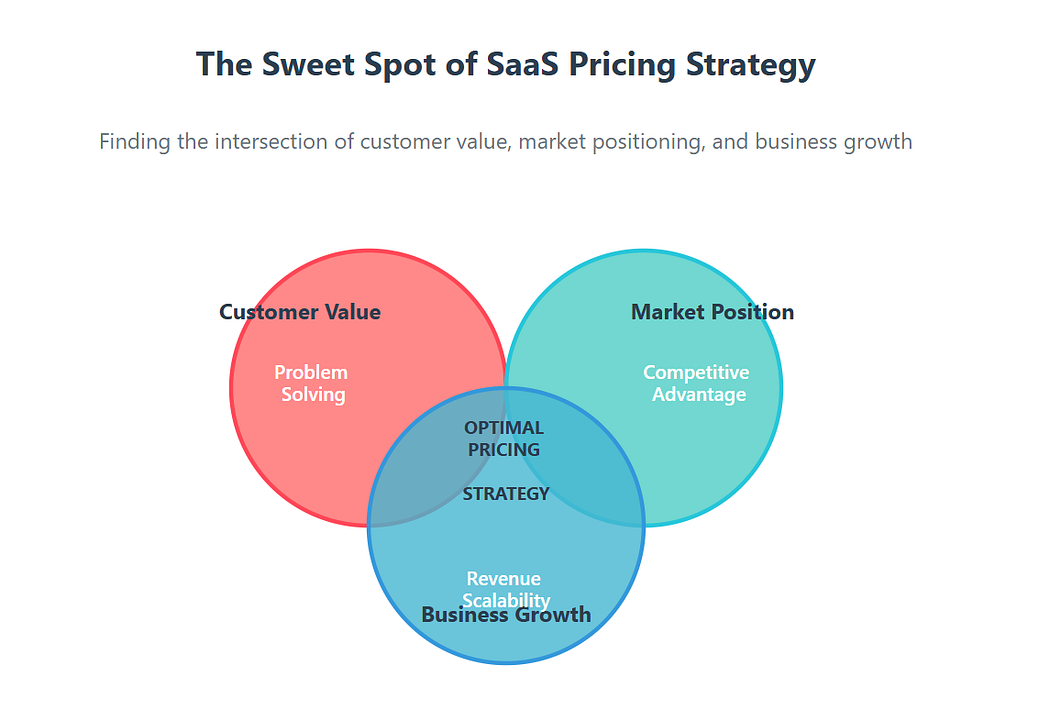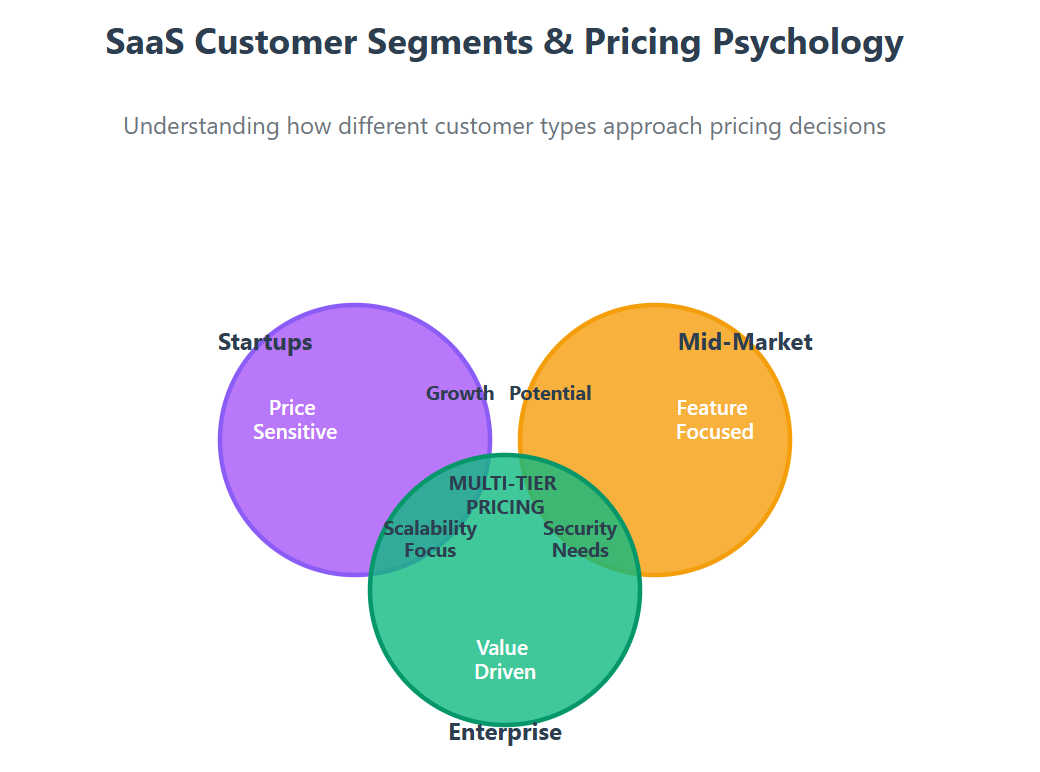Sonu Goswami (SaaS content writer) How I Learned That Pricing Strategy Can Make or Break Your SaaS
What Slack taught me about building pricing that actually scales (and why most founders get it wrong)

I’ve been obsessing over SaaS pricing for the past five years, and I keep coming back to one story that changed how I think about the whole game.
Back in 2013, when Slack was just getting started, they had this massive problem. How do you price something when your customers are so wildly different? I mean, think about it — a tiny startup might send maybe 100 messages a day, while some Fortune 500 company is pushing 100,000 messages across thousands of employees.
Most companies would panic and just pick some random middle ground. But Slack? They got creative.
They built their pricing around multiple things at once:
Pay per user who’s actually activeDifferent feature sets for different needs
Storage that grows with each plan
More integrations as you pay more
The result? They somehow managed to make money from broke startups AND massive enterprises paying hundreds of thousands yearly. When they went public, they were worth $26 billion.
That’s when it clicked for me — your pricing isn’t just about making money today. It’s about building a machine that grows with your customers.
Why Most of Us Screw This Up
Look, I get it. When you’re starting out, pricing feels impossible. You’ve got this product that took months to build, and you have no idea what people will actually pay for it.
So what do most founders do? They pick one price. Usually way too low because they’re terrified of scaring people away.
I’ve watched so many smart founders make this mistake, and it always leads to the same three problems:
You’re basically giving away money Here’s what I see all the time: A small marketing agency pays $50/month for an email tool that manages 500 subscribers. Meanwhile, some enterprise with 500,000 subscribers pays the same $50. That’s insane when you think about it.
Nobody takes you seriously This one really hurts. I’ve seen founders lose deals worth six figures because their pricing was too cheap. Enterprise buyers literally thought the product wasn’t good enough because it cost too little. It’s backwards, but it’s real.
You hit a wall With flat pricing, the only way to grow is finding new customers. You’re ignoring all the existing customers who’d happily pay more for extra value. It’s like leaving money on the table every single month.
What Actually Works: Building Pricing That Grows
The companies that really nail this treat pricing like Mercedes treats cars. They don’t just sell one sedan at one price. They’ve got the C-Class for young professionals, the S-Class for executives, and the AMG line for people who want the absolute best.
Your software should work the same way. You need different options for different customers, and paths for them to spend more as they grow.
The Four Ways to Structure Pricing That Actually Makes Sense

Features: The Classic Approach
Most people start here, and honestly, it works. You create different versions of your product:
Basic: The core stuff that solves the main problem Pro: Extra features for people who need more power Enterprise: Everything, plus the complex stuff big companies need
The trick is making sure each jump feels worth it. I’ve seen too many companies where the “Pro” version barely adds anything but costs twice as much.
Per User: My Personal Favorite
This one’s brilliant because it grows naturally with your customer. Small team? Small bill. Big team? Bigger bill. And here’s the beautiful part — when they hire someone new, your revenue goes up automatically.
I love this model because it aligns your success with theirs. When they’re doing well enough to hire, you benefit too.
Usage: Pay for What You Use
This works great when your product has obvious usage metrics. Think storage space, emails sent, API calls made. Customers start small and gradually use more as their business grows.
The cloud storage companies figured this out years ago. Nobody complains about paying more when they’re actually using more.
Value: The Holy Grail
This is the hardest to pull off, but when it works, it’s amazing. You price based on the actual value you create — maybe a percentage of revenue you help generate, or money you help save.
It requires really understanding your customer’s business, but you can charge premium prices when you do it right.
Getting More Money from Existing Customers
Once you’ve got your main pricing figured out, there are tons of ways to make more from the customers you already have:
Add-ons: Extra modules they can buy Marketplace fees: Take a cut from third-party stuff Services: Help them implement and get the most out of your product Premium support: Faster help when they need it
The best part? These don’t complicate your main pricing. They’re just extra options for customers who want them.
The Psychology Part Everyone Ignores

Different types of customers think about money completely differently:
Startups are broke and scared. They want the cheapest thing that works. Mid-market companies want something that won’t embarrass them but won’t break the bank. Enterprise buyers actually expect to pay more. If your price is too low, they’ll assume your product isn’t enterprise-ready.
I learned this the hard way. I once lost a huge enterprise deal because our pricing was too cheap. The buyer literally said it made them nervous about our capabilities.
How to Actually Do This
Start simple. Don’t try to get fancy with seven different pricing variables. Pick 2–3 things that matter most to your customers and build around those.
Test everything. Your first pricing will be wrong. That’s okay. Watch how customers behave, ask them questions, and adjust based on what you learn.
Make sure you can explain it. If you can’t easily tell a customer why they should pay your price, you need to rethink it.
Look at what the successful companies do:
Mailchimp charges based on contacts and emails sentZoom has different features plus limits on meeting length
Salesforce layers features, users, and storage across multiple products
HubSpot combines feature tiers with usage limits and add-ons
Each found pricing that matched how their customers actually use and value the product.
Don’t Make These Mistakes
Underpricing premium features. If your enterprise tier has way more value, charge way more for it. Don’t be scared of big price jumps.
Making it too complicated. If customers can’t understand your pricing in 30 seconds, you’ve lost them.
Ignoring what competitors charge. You don’t need to copy them, but you should know what the market expects.
Setting it once and forgetting it. Good pricing evolves as you learn more about your customers.
What’s Coming Next
Pricing keeps evolving. Usage-based pricing is exploding, especially for API products. Some companies are experimenting with outcome-based pricing where you only pay when you get specific results.
But the core principle stays the same: align your pricing with the value customers get, and create natural ways for revenue to grow as they succeed.
Your Next Steps
Here’s what I’d do if I were you:
Figure out the 2–3 things your customers value mostBuild pricing around those things
Test it with real customers
Listen to feedback and adjust
Keep refining as you learn more
Perfect pricing doesn’t exist. But pricing that evolves with your understanding of customer value? That’s how you build a business that grows.
Let’s Talk
What’s your biggest pricing headache right now? Are you stuck on enterprise pricing? Trying to figure out the right features for each tier? Or maybe you’re wondering about usage-based pricing?
Drop a comment below. I love talking through specific pricing challenges, and I bet other founders here have similar questions. The best insights always come from sharing real experiences.
If this helped you think differently about pricing, give it a clap and share it with other founders who might benefit.
I write about SaaS growth, pricing strategies, and building scalable businesses. Follow me for more insights from the trenches.

